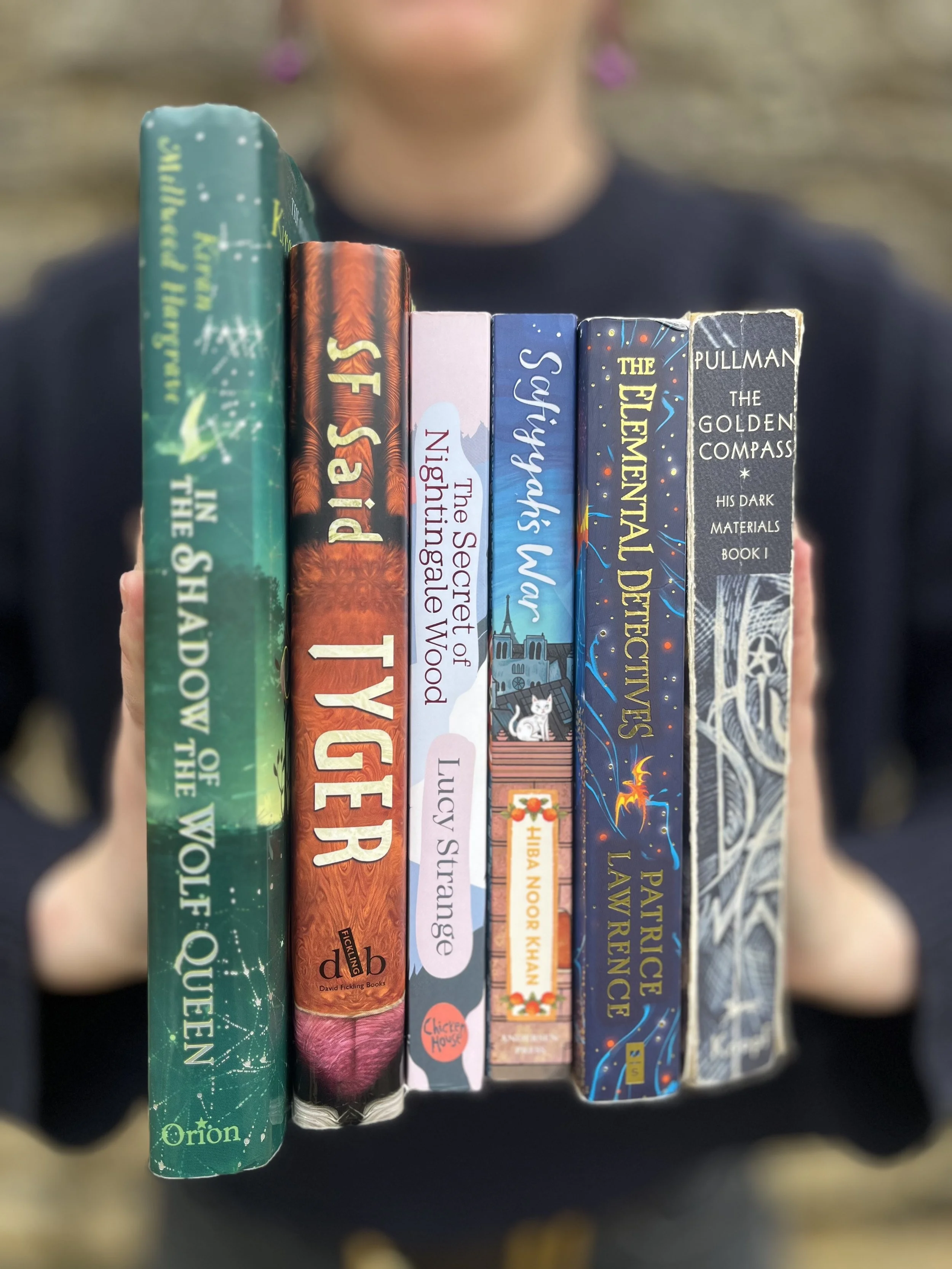The Books That Inspired ‘The Weaver and the Wildcat’
“In a fantastical Reformation world, thirteen-year-old Kat is grief stricken after her mother is burned at the stake when the new Queen outlaws common people from wielding Threads – magical connections between all things. To keep her father and sister safe, Kat is desperate to wield Threads, but royalist Walter wants nothing more than to expose her as a traitor. With time running out, can she escape Walter, oppose the Queen’s persecutions, and uncover the secret of her relationship with the world’s Threads?”
Pitch for The Weaver and the Wildcat.
Starting a new project is daunting. A strategy I’ve found helpful is to pull together a pile of books that resonate with my hope for and themes of the new manuscript. These texts show me what is possible and ease me into my own writing.
For THE WEAVER AND THE WILDCAT, I searched for fantasy and historical novels that changed me as a reader, for upper middle grade that lit a spark in my imagination.
Let me take you through my selection.
In the Shadow of the Wolf Queen by Kiran Millwood Hargrave
I adore Hargrave’s lyrical writing, which is coupled with emotional intelligence, and chose her then-new book In the Shadow of the Wolf Queen for her use of nature-led magic, which I heard her discuss on the podcast Bookwandering with Anna James. Reading In the Shadow of the Wolf Queen showed me the scope of what can be achieved when an author leans into natural inspiration. It gave me the confidence to try something new and create my own different magical system: one that works like a forest’s mycelium network.
Tyger by SF Said
As a Quaker, I love Said’s portrayal of the light inside each of us. With a twist of imagination, the reader is given an alternative history – one which is stark but necessary to consider given issues faced today. Said trusts that readers can handle difficult truths of the past and, in so doing, never talks down to young people or evades difficult concepts and allusions. As I deal with grief and persecution in my manuscript, I chose Tyger for its scope and presentation of sophisticated concepts for young people.
The Secret of Nightingale Wood by Lucy Strange
At once lyrical and gripping, Stange’s story centers a courageous, yet conflicted, protagonist who must confront her assumptions about herself in order to realize her strength. Henry, while a child, has autonomy throughout the story, facing tremendous challenges with bravery. I believe that allowing young protagonists to have the power to solve the story’s problems is essential when writing for children, and The Secret of Nightingale Wood serves as a reminder. I also chose Strange’s book for her gorgeous writing married with her ability to bring a modern reader into a historical time.
Safiyyah’s War by Hiba Noor Khan
Safiyyah’s War was recommended by Emily Drabble on ‘The Island of Brilliant’, the podcast hosted by Frank Cottrell-Boyce and Nadia Shireen. It quickly became one of my favorite books, one which blends beautiful storytelling with a true history I knew nothing about. Khan writes about standing up to injustices in such a courageous way. While I write fantasy, I chose Safiyyah’s War because Khan gave me courage to create a protagonist who needs to find her way into standing up for herself, her family, and others who are discriminated against.
The Elemental Detectives by Patrice Lawrence
I first came across Lawrence’s writing on my MA, and then I was lucky enough to meet her when I volunteered at the Bath Children’s Literature Festival. Having loved her writing, I was delighted when she wrote a fantasy series, immediately loving Lawrence’s exciting, fast-paced action story that seamlessly weaves research-inspired details into world building. It showed me how fantasy can shift a reader’s view of history offering both an alternate view as well as more context. I chose The Elemental Detectives for Lawrence’s ability to bring historical research to life for a modern day audience through fantasy – and to remind me to do justice to history by bringing to life characters not seen on the page often enough.
The Golden Compass by Philip Pullman
Unlike the other books, which I read more recently, The Golden Compass is an old friend. I first read it aloud to a sibling in 2002. Recently graduated from high school, my parents were divorcing. Lyra and her friends gave me an escape at a difficult time in my life, and for that it was an obvious choice twenty some years later; I was starting my manuscript as my mother was dying. Not only did I choose it for emotional reasons, but also for its ability to create a world which is at once recognizable to a modern reader while being fantastical.
While my manuscript is different from these six books, they each have elements within their pages that I aspire to in my story. Not only do these texts inspire me, but they’ve taught me about my own storytelling and remain a touchstone to return to when I lose my way. If I can achieve an ounce of what these writers did for me as a reader, I will be so proud.
Visit Sarah’s author page


